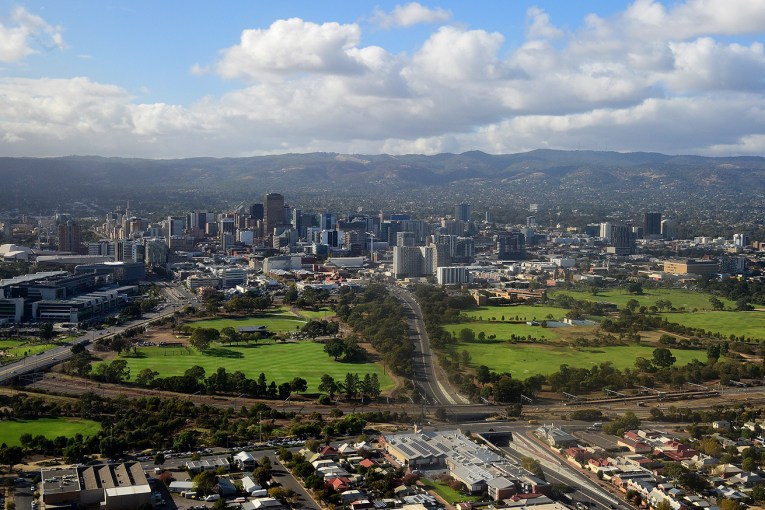How consumers are paying for the RET


Shutterstock
The ‘Renewable Energy Target’ is one of those things you either understand or you don’t; and if you don’t, you’re out of the conversation.
This is a bit unfair because the reality is, it’s consumers who are paying for it – to the tune of three per cent of our power bills.
There is a strong argument that this is actually a very good deal. But to understand why, you need to understand how the Renewable Energy Target (RET) works.
• Winter is coming: take control of your power bill
• Will the poles and wires sale raise prices?
• Kilo-what? Electricity bill jargon explained
But before going into that, here’s why the RET has been in the news this week.
What happened on Tuesday

Tony ‘coal is good for humanity’ Abbott hasn’t gone to great lengths to conceal his suspicion of renewables. Photo: AAP
On Tuesday the renewables sector scored a small, belated victory.
The victory came in the form of the Abbott government reaching a compromise with Labor, whereby it slashed its renewable energy targets by only half as much as it wanted.
In short, the government has set the 2020 target at 33,000 gigawatt hours (GWh)*. That’s down from Labor’s target of 41,000 GWh, but a lot higher than the government initially wanted.
While this is a better-than-expected outcome, it comes after 14 months of carnage in the renewables industry, as the RET’s uncertain future saw businesses fail and investment in the industry drop by 88 per cent.
How the RET works
In a nutshell, the RET is a piece of legislation that forces energy retailers to subsidise renewable energy producers.
If you are a renewable energy producer, such as a wind or solar farm, the RET allows you to issue certificates for every megawatt hour of power you generate.
Energy retailers – think Origin, AGL, Red Energy etc – must buy a certain number of these certificates every year, and ‘surrender’ them to the government at the end of the year.
There is no set price for these certificates; how much they sell for depends upon supply and demand. In this respect, the RET is a market-based solution much like an emissions trading scheme.
Kane Thornton, chief executive of the Clean Energy Council, said the RET subsidy is vital for the survival of many renewable energy projects.
He explained it as follows: “If you’re a wind farm producing electricity, the electricity itself is worth about $30 or $40 on the wholesale energy market. And then you get to create a certificate, and that certificate is worth about another $40 or $50. And so those two things together make a renewable energy project viable.”
A tax on consumers?

Promiscuous pole-and-wires don’t discriminate against renewably sourced energy.
One major criticism of the RET is that it is an indirect tax on consumers and businesses, as retailers pass the cost on to their customers.
The Mineral Council of Australia, which represents coal producers, argued that the “excessive cost burden it places on households and industry undermining national competitiveness”.
Institute of Public Affairs’ director of energy and innovation Brett Hogan levelled a similar criticism, telling The New Daily that “any tax regulatory scheme that adds to electricity costs is bad for consumers and is bad for business”.
Mr Thornton conceded that the RET currently accounts for about three per cent of power bills. However, he claimed that that three per cent is offset by the lower cost of energy, caused by the increase in supply.
“By bringing more renewable energy into the energy mix, what happens is the overall wholesale energy price actually goes down. What that means is, if you took the RET away, power prices would go up.”
The question is, would this rise in prices cancel out that three per cent saving? Modelling by ACIL Allen suggests that in the long-term, they would – though not by all that much.
If the modelling is correct, that means consumers are marginally better off with the RET in place in the long term.
The real issue
But all this is really beside the point. The real purpose of the RET is to bring Australia’s carbon emissions down as part of the battle against climate change.
If you accept the premise that climate change is real and we need to develop renewable energy, it is unrealistic to expect the private sector to develop it on its own. Some form of subsidy, either direct or indirect, is necessary.
The IPA’s Brett Hogan conceded that “there’s a reasonable argument to say that new industries might do with a bit of support”, though he argued that “these aren’t new industries, they’ve been around for a long time”.
New or not (and next to coal, they’re decidedly new), renewables needs support – as evidenced by the number of business collapses over the past 14 months.
The question for consumers is, are you prepared to pay three per cent more on your power bills to support the growth of clean energy?
If the answer is yes, then big coal’s objections are irrelevant.
* One gigawatt hour is enough energy to run a million small electric heaters for one hour. A megawatt hour – which is what a RET certificate represents – is one-thousandth of a gigawatt hour.








